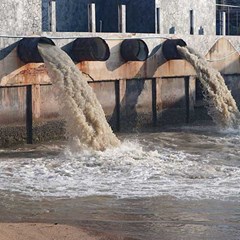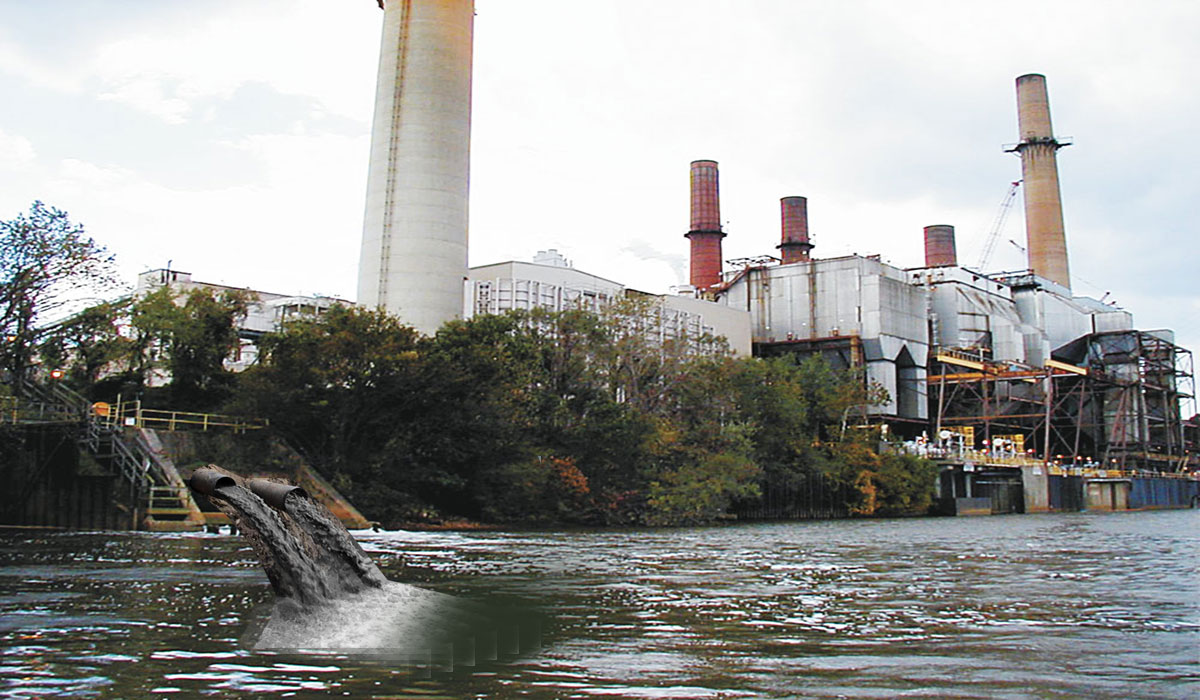Industrial Waste Water Treatment-- Lasting Solutions for Industrial Water Management
Industrial Waste Water Treatment-- Lasting Solutions for Industrial Water Management
Blog Article
Difficulties and Solutions in Hazardous Waste Water Therapy
The therapy of commercial wastewater provides a multifaceted array of obstacles, varying from rigid regulatory compliance to the details of price administration and technical constraints. The irregularity in waste composition better makes complex the performance of conventional treatment methods, commonly resulting in risen functional expenditures.
Regulatory Compliance Obstacles
Exactly how can commercial facilities browse the complex landscape of governing compliance in wastewater treatment? The governing framework regulating wastewater management is diverse, often varying by territory and kind of industry.
To properly manage these compliance obstacles, facilities ought to apply robust tracking and reporting systems that make certain real-time data collection and analysis. Routine audits and threat assessments can identify potential conformity gaps, enabling for positive changes in treatment procedures. Employee training programs focusing on governing knowledge and best practices are vital to cultivate a culture of compliance within the organization.
Furthermore, involving with regulative firms can offer beneficial insights and make clear ambiguous laws. Facilities may additionally gain from talking to environmental professionals that specialize in wastewater therapy compliance, guaranteeing that they remain abreast of evolving guidelines. By adopting these approaches, commercial centers can not only fulfill conformity requirements however additionally enhance their operational effectiveness and ecological stewardship.
Cost and Economic Barriers
Browsing governing conformity in wastewater treatment commonly offers significant monetary obstacles for commercial centers. The costs associated with carrying out essential treatment innovations, maintaining compliance with strict guidelines, and taking care of functional expenditures can be discouraging. Many organizations face high initial capital investment for the building or updating of wastewater therapy plants, which might stress budget plans, particularly for little and medium-sized business.
Moreover, continuous functional expenses, including labor, maintenance, and chemical inputs, add to the monetary problem. The changability of changing energy prices and the potential demand for added financial investments to fulfill advancing guidelines worsen these economic pressures. In a lot of cases, the absence of monetary rewards or assistance from federal government bodies makes it much more challenging for organizations to warrant investments in advanced therapy systems.
Furthermore, the economic viability of wastewater therapy services is frequently examined, especially for industries with limited revenue margins. For that reason, it is vital for commercial facilities to discover economical techniques, such as taking on ingenious financing choices, taking part in collaborations, and leveraging emerging modern technologies that can assist minimize these economic obstacles while making sure conformity with environmental standards.

Technical Limitations
Various technical restrictions prevent the efficiency of commercial wastewater treatment procedures. One considerable obstacle is the inadequacy of existing therapy innovations to resolve complicated impurities.
Furthermore, the scalability of therapy innovations postures a challenge. While some innovative methods, like membrane layer purification or advanced oxidation, reveal guarantee in regulated atmospheres, their execution on a larger scale can be technically this content difficult and much too pricey. Maintenance and operational intricacies further complicate the adoption of these systems, specifically for smaller sized industries with restricted technological knowledge.
The assimilation of real-time surveillance technologies likewise stays not enough in many treatment facilities. Without efficient tracking systems, drivers can not adequately evaluate treatment performance or spot prospective failures, causing irregular effluent top quality. Subsequently, resolving these technological limitations with r & d, along with investment in cutting-edge remedies, is essential for improving the effectiveness of industrial wastewater treatment and guaranteeing regulatory compliance. Industrial Waste Water Treatment.
Variability in Waste Composition
In the world of industrial wastewater treatment, the irregularity in waste make-up provides a formidable challenge. Industries create wastewater with varied qualities, influenced by factors such as manufacturing processes, resources, and functional methods. This heterogeneity makes complex the treatment process, as standard systems typically struggle to effectively attend to the vast array of toxins present.
For example, wastewater from food processing may consist of high levels of natural matter, while effluents from chemical production might consist of harmful substances and hefty metals. This difference necessitates versatile treatment strategies to guarantee conformity with environmental guidelines and protect public wellness. Additionally, variations in waste composition can happen over time, influenced by adjustments in production routines, upkeep activities, or the intro of brand-new products.

Innovative Therapy Solutions
Ingenious therapy services are essential for attending to the intricacies of industrial wastewater monitoring. Conventional approaches frequently drop brief in efficiently getting rid of a wide variety of contaminants, especially in centers with varied effluent streams. Recent improvements concentrate on integrating innovative modern technologies to enhance treatment performance and sustainability.
One encouraging method is using innovative oxidation procedures (AOPs), which leverage powerful oxidants to break down natural pollutants. AOPs, including photocatalysis and ozonation, can substantially lower toxic substances and enhance effluent high quality. In addition, membrane layer bioreactor (MBR) technology has acquired traction, integrating biological therapy with membrane layer purification, causing high-quality effluent and reduced footprint.
Another innovative service is the application of resource healing systems. Methods like anaerobic digestion not only treat wastewater but also produce biogas, which can be utilized as a renewable energy source. Furthermore, the adoption of expert system and equipment learning versions can optimize therapy procedures by anticipating variations in wastewater structure, thus enhancing functional performance.
These cutting-edge options not only address regulatory conformity however also advertise environmental sustainability, paving the means for a go to the website much more resilient and reliable commercial community.
Conclusion
In conclusion, attending to the obstacles of industrial wastewater treatment needs a diverse strategy that incorporates regulatory compliance, cost administration, and technical innovations. A dedication to continual improvement in treatment approaches will eventually contribute to the efficient administration of commercial wastewater and ecological defense.
The therapy of commercial wastewater provides a diverse variety of obstacles, varying from rigorous governing conformity to the details of price monitoring and technical restrictions. Industrial Waste Water Treatment.Browsing regulative compliance in wastewater treatment frequently presents significant financial obstacles for commercial centers. Attending to these technological limitations through study and growth, along with investment in innovative solutions, is crucial for boosting the efficiency of industrial wastewater treatment and ensuring governing compliance
Wastewater treatment centers need to invest in robust surveillance systems and versatile treatment modern technologies qualified of accommodating differing influent attributes.In final thought, addressing the obstacles of industrial wastewater therapy needs a multifaceted strategy that incorporates regulatory conformity, expense monitoring, and technological advancements.
Report this page